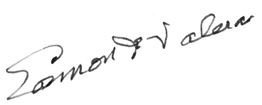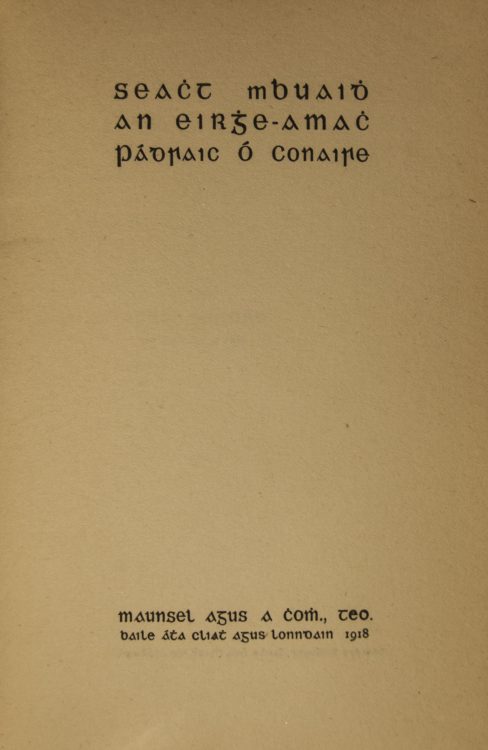The Gaelic League (Conradh na Gaeilge) was founded in 1893 to preserve the Gaelic language as Ireland’s national language, especially as a spoken language, and to publish and study Irish language and literature. It was intended to be non-political and non-sectarian, open to all Irish men and women interested in keeping Irish cultural traditions. Most of its members, however, were nationalists, including many of the signatories of the 1916 Proclamation, and it was through the League that many republicans who took part in the 1916 Rising met. Padraig Pearse edited the League’s first newspaper, Michael O’Rahilly’s (known as The O’Rahilly) An Claidheamh Soluis (The Sword of Light).The League was a powerful force of the Irish cultural revival. Eoin MacNeill’s(1867-1945) push for the League to support the Irish Volunteers in 1915 led to Douglas Hyde’s resignation as president. When Ireland gained independence in 1922, the influence of the Gaelic League waned as the State took on the role of promoting Irish culture.
Gaelic scholar Douglas Hyde (1860-1949) served as the longtime president of the Gaelic League from 1893-1915 and as the first president of Ireland from 1938-1945. His pen name was An Craoibhín Aoibhinn (“The Pleasant Little Branch”). In 1901, the Irish Literary Theatre produced Hyde’s Casadh an tSugain (“The Twisting of the Rope”), its first play in Gaelic.
Dánta éagramhla agus Béarla curtha ortha. Printed for the President of Ireland by Colm O Lochlainn at the Sign of the Three Candles, Dublin, 1943.
Hyde was president of Ireland in 1943. This copy bears Eamon de Valera’s (president of Ireland from 1959 to 1973) ownership signature.
Writer and journalist Pádraic Ó Conaire (1882-1928) published mainly in Gaelic. Considered the first significant fictional response to the events of the 1916 Rising, this collection of short stories set around the Easter Rising is not strictly romantic nationalist rhetoric. Through stories about very different people and the effects the Rising had on them, Ó Conaire addresses the popular shift in attitude toward Sinn Féin that led to the party’s overwhelming victory in 1918. Ó Conaire moved through the same circles as many of the revolutionaries, such as Eamonn de Valera and Michael Collins, including the Irish Volunteers and the Gaelic League.
Corkery, Daniel. What’s this about the Gaelic League? [Ath Cliath]: Chonnradh na Gaedhilge, 1941.
Professor Daniel Corkery (1878-1964) is best known for his controversial Hidden Ireland (1924), a revisionist account of eighteenth-century Gaelic culture in Munster. He was a leader of the Irish Ireland movement along with D.P. Moran. By the time the Irish Free State had come into being in 1922, many of the Gaelic League’s members had ceased their activities, instead hoping to pass on educational efforts and the preservation of Gaeltachts (Irish-speaking areas) to the new government. The first governing party, Cumann na nGaedheal, reported that it would work with the League, and study of the Irish language was made compulsory in state-funded schools. But by the 1940s, indifference to the language had spread, and the League’s influence was severely diminished. In this pamphlet, Corkery attempts to sway a new generation to the Gaelic League, which, he believes, still has a place in Ireland.





